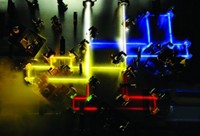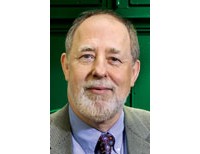Advertisement
Grab your lab coat. Let's get started
Welcome!
Welcome!
Create an account below to get 6 C&EN articles per month, receive newsletters and more - all free.
It seems this is your first time logging in online. Please enter the following information to continue.
As an ACS member you automatically get access to this site. All we need is few more details to create your reading experience.
Not you? Sign in with a different account.
Not you? Sign in with a different account.
ERROR 1
ERROR 1
ERROR 2
ERROR 2
ERROR 2
ERROR 2
ERROR 2
Password and Confirm password must match.
If you have an ACS member number, please enter it here so we can link this account to your membership. (optional)
ERROR 2
ACS values your privacy. By submitting your information, you are gaining access to C&EN and subscribing to our weekly newsletter. We use the information you provide to make your reading experience better, and we will never sell your data to third party members.
Analytical Chemistry
Ahmed Zewail Award In Ultrafast Science & Technology
by Glenn Hess
February 25, 2013
| A version of this story appeared in
Volume 91, Issue 8
Sponsored by the Ahmed Zewail Endowment Fund established by Newport Corp.
David M. Jonas is internationally recognized for his pioneering work in phase-resolved nonlinear optics and his exploitation of that work to demonstrate femtosecond two-dimensional Fourier transform (2-D FT) spectroscopy.
In fact, “Jonas has the strongest claim on the title of inventor of multidimensional electronic spectroscopy”—the optical analog of nuclear magnetic resonance (NMR)—says Paul B. Corkum, a physics professor at the University of Ottawa and a Zewail Award recipient.
Jonas, a chemistry professor at the University of Colorado, Boulder, combines creative ideas with a deep understanding of nonlinear optics and of the essential physics that underlies electronic couplings, Corkum remarks.
In 2-D FT spectroscopy, the temporal evolution of a nonlinear signal from a sample is measured as a function of the experimentally controlled time delay between two excitation fields. Initially, theoretical and experimental approaches to femtosecond 2-D spectra relied on a mathematical operation known as Fourier transformation to determine the difference between two field frequencies (either between two excitation fields or between an excitation field and the signal field); in contrast, most 2-D FT NMR experiments depend on determination of absolute excitation and radiation frequencies.
In a key advance in the late 1990s, Jonas and his research group figured out how to directly measure femtosecond nonlinear optical signal fields produced by a sample at their point of origin, including the timing and phase of the fields. The researchers measured both signal timing and signal phase relative to the excitation fields.
There was just one problem: The phases obtained did not agree with theory. So Jonas and his group developed a theory for the phase of the nonlinear signal and exploited full measurement of the signal field to demonstrate the first optical analogs of early 2-D FT NMR experiments.
“His key insight was to replace magnetic resonance phase cycling by nonlinear optical phase matching, a phenomenon not known in NMR,” says Veronica Vaida, a professor of chemistry and biochemistry at CU Boulder. “After his development of 2-D FT principles and technique, Jonas’ work completely changed the direction of ultrafast infrared and visible spectroscopy.”
Corkum says it takes intellectual confidence to enter such a difficult field where the progress will be slow initially. “To my mind,” he remarks, “Jonas has been modest about these achievements.”
Researchers use the 2-D FT spectroscopy approach developed by Jonas and his group to study ultrafast processes in gases, liquids, solids, glasses, and proteins.
So far, the technique has lifted the veil of condensed-phase inhomogeneous broadening to reveal coupling and dynamics at molecular resolution limits, Jonas says. “This has allowed chemists and physicists to address unresolved mechanistic questions with vibrational and electronic spectroscopy, and stimulated new questions about coherence and mechanism,” he remarks. “Interactions between vibrations and electrons drive chemistry, and we are starting to understand how these interactions are manifested in 2-D spectra.”
Jonas, 49, received a B.S. in chemistry and an A.B. in mathematics from the University of California, Berkeley, in 1986. He earned a Ph.D. in physical chemistry from Massachusetts Institute of Technology in 1992 with Robert W. Field, coadvised by James L. Kinsey and Robert J. Silbey. After postdoctoral work at the University of Chicago with Graham R. Fleming, he joined the CU Boulder faculty in 1995.
Jonas will present the award address before the ACS Division of Physical Chemistry.





Join the conversation
Contact the reporter
Submit a Letter to the Editor for publication
Engage with us on Twitter